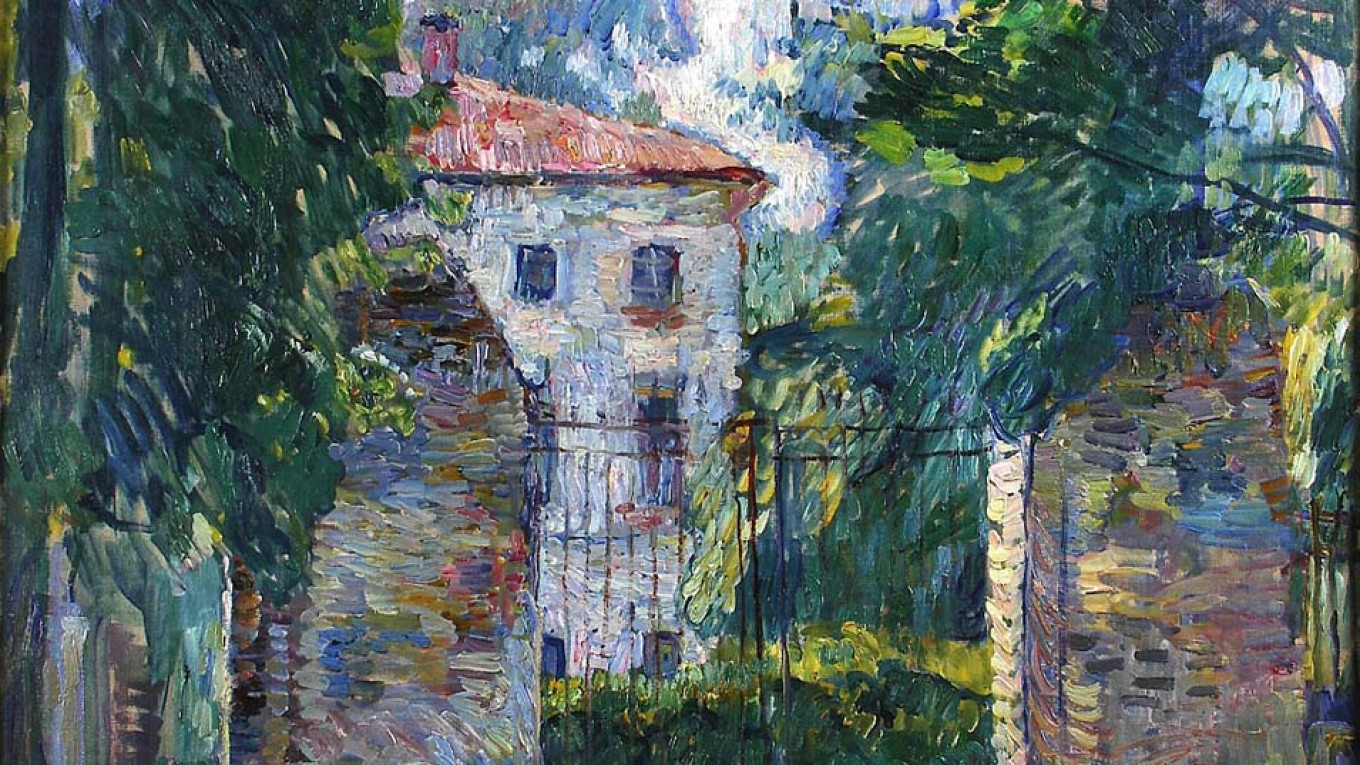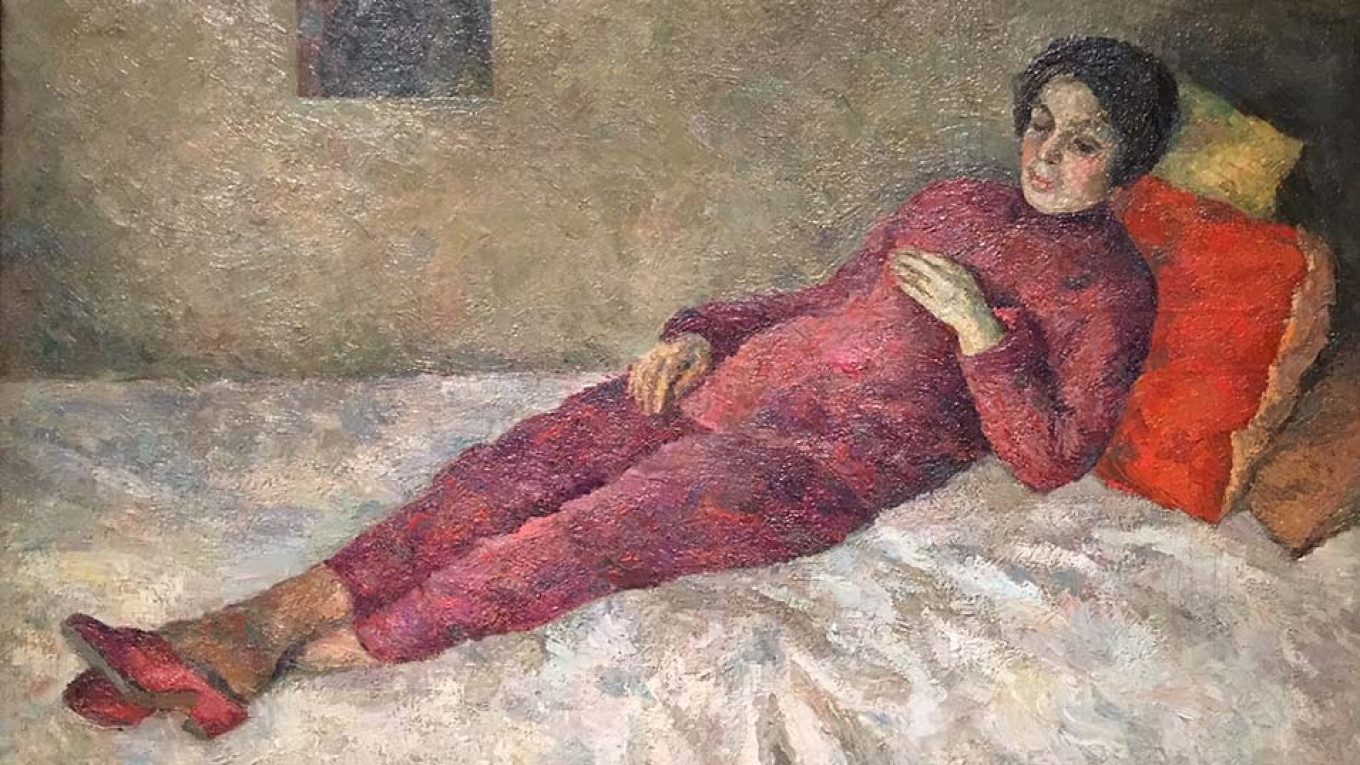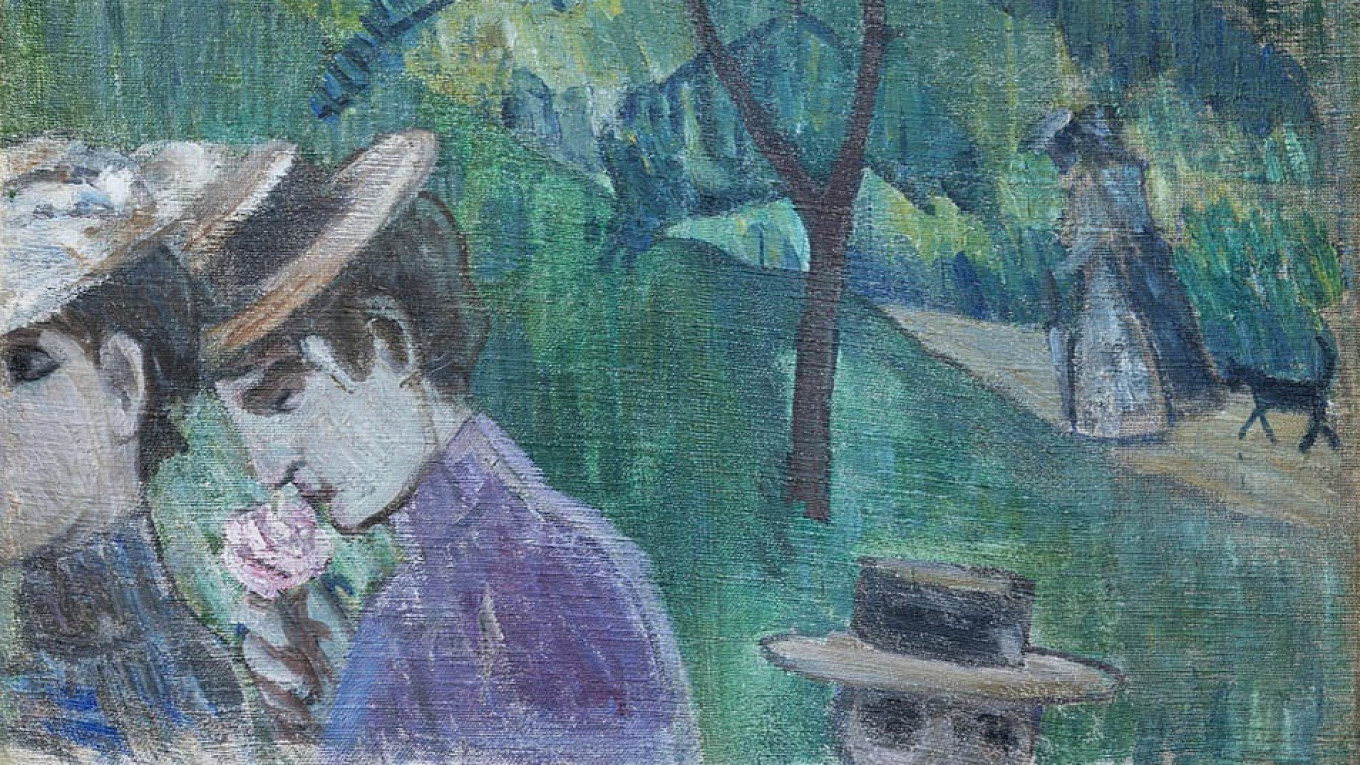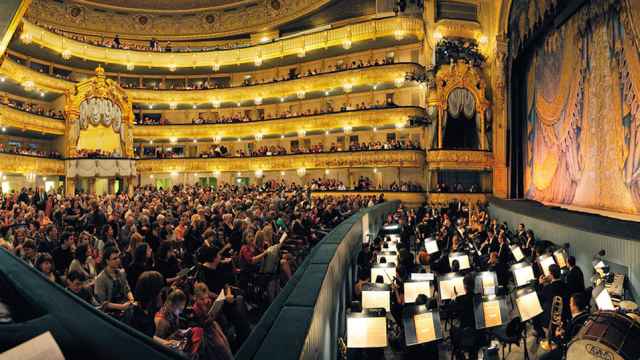If you haven’t already been to the exhibition “Impressionism in the Avant-Garde” in the Museum of Russian Impressionism, this weekend (until Tuesday) is your last chance to see it before it closes. And even if you have seen it, consider visiting it again — as an artistic prologue, as it were, to the museum’s next exhibition: a major show of works by David Burliuk — called the “father of futurism” — that opens in October.
The current exhibition displays over 60 works from 14 museums and five private collections, and its list of artists reads like the Who’s Who of the Russian avant-garde: Vladimir Tatlin, Natalia Goncharova, Mikhail Larionov, David Burliuk, Kazimir Malevich, Robert Falk and many others.
Their works, though, are not the geometrical and abstract canvases from the peak of the Russian avant-garde, but “uncharacteristic” portraits and landscapes done early in their artistic careers or, in some cases, later in life. It turns out that these warm, impressionistic works only seem “uncharacteristic” — they were an integral part of these artists’ creative development.

Impressionism: French and Russian
In art history books, impressionism is a well-defined school of art and artists, beginning in 1865 with Edouard Manet’s exhibition of his painting “Olympia” and peaking in the 1880-1890s in France. Over the next decades artists took the original focus on light, color and "impression" further in "schools" that were called post-impressionism and fauvism. And then in the first years of the 20th century, Pablo Picasso and Georges Braque broke ranks and rules with what is now called cubism, heralded by Picasso’s “Les Demoiselles d'Avignon” (1907) and Braque’s many versions of the violin (1909-1913).
This grand evolution of Western art — impressionism, post-impressionism, fauvism, cubism — that took place from 1865 to 1913 became known to Russian artists who traveled to Paris or visited the galleries of the Russian art collectors. But for Russian artists, exhibition curator Anastasia Vinokurova said, “all those various ‘-isms’ were all part of one grand movement called ‘impressionism’.” And “to the Russian mind, impressionism was freedom. It was a new language that allowed them to break away from the strictures of academic painting, from provincialism," Ilya Doronchenkov, professor in the art history department of the St. Petersburg European University, told The Moscow Times,
You can get a sense of this from the quotes by the exhibited artists printed on the walls of the exhibition space. Wassily Kandinsky wrote about seeing Claude Monet’s painting of “The Haystack.” He was first irritated that the object was painted so indistinctly. But then he wrote: “I noticed with surprise and confusion that the picture not only gripped me, but etched itself ineradicably in my memory… Painting took on a fairytale power and splendor.”
Andrei Sarabyanov, head of the Center for the Avant-Garde of the Jewish Museum and Tolerance Center and a contributor to the very informative exhibition catalog, stressed that Russian impressionism and French impressionism were two different artistic trends. Russian artists saw almost 30 years of French art all at once, not developed over time, and they also had their own home-grown form of impressionism that was independent of European art – the plein air art of painters such as Isaac Levitan and Vasily Polenov.
“Impressionism,” Sarabyanov said, “was not the end point, but a school that Russian artists went through on their way somewhere else, like going through the fifth grade.” This step took them through light, color, harmony of line and paint to the great leap of the Russian avant-garde.
Many avant-garde artists returned to a more impressionistic style in the late 1930s and 1940s. Doronchenkov said that impressionism was for them “a sea, a flood that they could dive into, come out of, and then dive back in.” In the show be sure to see the “Self Portrait” and “Summer Landscape” by Kazimir Malevich (1934 and 1929 respectively), done more than a decade after his supremacist “Black Square.”

An afternoon of delight
But you don’t have to know this to enjoy the show. Two halls on two floors are filled with lush landscapes, portraits, scenes of nature — and there is a pleasant little jolt of surprise when you check the painter and see names like Vladimir Tatlin and Wassily Kandinsky on works that are so very different than what they are now famous for.
On the top floor, note the small canvas called “Promenade,” painted in 1907-08 by Mikhail Larionov. A fine example of the artist’s impressionist period, it was first part of Larionov’s private collection until 1915 and then kept by the son and grandchildren of architect Fyodor Shekhtel, who was friends with Larionov. It is now in another private collection.
The second floor includes some later works of bathers, parks and dachas that are like an ethereal version of socialist realism without the hearty workers and bombast. Don’t miss Robert Falk’s delicate birch trees or Pyotr Konchalovsky’s very French-inspired family scenes from Paris in the early 20th century.
This show will prepare you for the museum’s next exhibition of David Burliuk — or perhaps for another walk through the museum’s permanent collection.
15 Leningradsky Prospekt, Bldg. 11. Metro Belorusskaya. Rusimp.su. The museum is open every day, and the show is on through Tuesday.
A Message from The Moscow Times:
Dear readers,
We are facing unprecedented challenges. Russia's Prosecutor General's Office has designated The Moscow Times as an "undesirable" organization, criminalizing our work and putting our staff at risk of prosecution. This follows our earlier unjust labeling as a "foreign agent."
These actions are direct attempts to silence independent journalism in Russia. The authorities claim our work "discredits the decisions of the Russian leadership." We see things differently: we strive to provide accurate, unbiased reporting on Russia.
We, the journalists of The Moscow Times, refuse to be silenced. But to continue our work, we need your help.
Your support, no matter how small, makes a world of difference. If you can, please support us monthly starting from just $2. It's quick to set up, and every contribution makes a significant impact.
By supporting The Moscow Times, you're defending open, independent journalism in the face of repression. Thank you for standing with us.
Remind me later.







